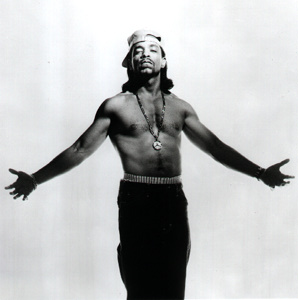The Big Chill
The hip hop music of the mid-1990’s, reconfigured as a golden era for white adolescence
Sony Pictures Classi
A couple weeks back, Ice-T, whom you may know from Law & Order: Special Victims Unit, and who is also, it turns out, a famous rapper, fired a shot across the bow of the unlikeliest of enemies: gimmicky teen dance-rapper Soulja Boy.
 Averring that Soulja Boy had “single-handedly killed hip-hop.” Ice T continued, “We came all the way from Rakim…we came all the way from motherfuckers flowing like Big Daddy Kane and Ice Cube, and you come with that Superman shit? That shit is garbage.”
Averring that Soulja Boy had “single-handedly killed hip-hop.” Ice T continued, “We came all the way from Rakim…we came all the way from motherfuckers flowing like Big Daddy Kane and Ice Cube, and you come with that Superman shit? That shit is garbage.”
T later refined his message, a sort of backpedal, praising some new-schoolers who “really write something,” like Ludacris, T.I., and Lil Wayne, while continuing to call Soulja Boy wack.
It was weird.
More embarrassing than Soulja Boy’s subsequent YouTube responses was the fact that Ice T had bothered to say any of this in the first place. Yet his sentiments are indicative of a special breed of generational paranoia with regard to hip hop, an adoration of hip hop’s glory days.
 The Wackness, a new movie that hits theaters this weekend, exemplifies this trend. It’s all about those glory days.
The Wackness, a new movie that hits theaters this weekend, exemplifies this trend. It’s all about those glory days.
“NYC. Summer 1994. The girls were fly. The music was dope. And Luke was just trying to deal.” It’s a Bildungsroman set to the hip hop of the mid-1990’s, and the music and the movie are there to glorify each other.
The music is an essential element for Luke in his journey of self-discovery: white, nerdy, privileged, and desperate for love. His headphones are there when his parents fight, when he’s friendless at a graduation party, when he gets laid, when he muses on the meaning of life.
If you ask a fan about the golden age of hip hop, he or she will likely point to some time between 1986 and 1996. To many, the rap of the early 1980’s is admirable but infantile; since 1996 it’s all downhill. But one can remember!

